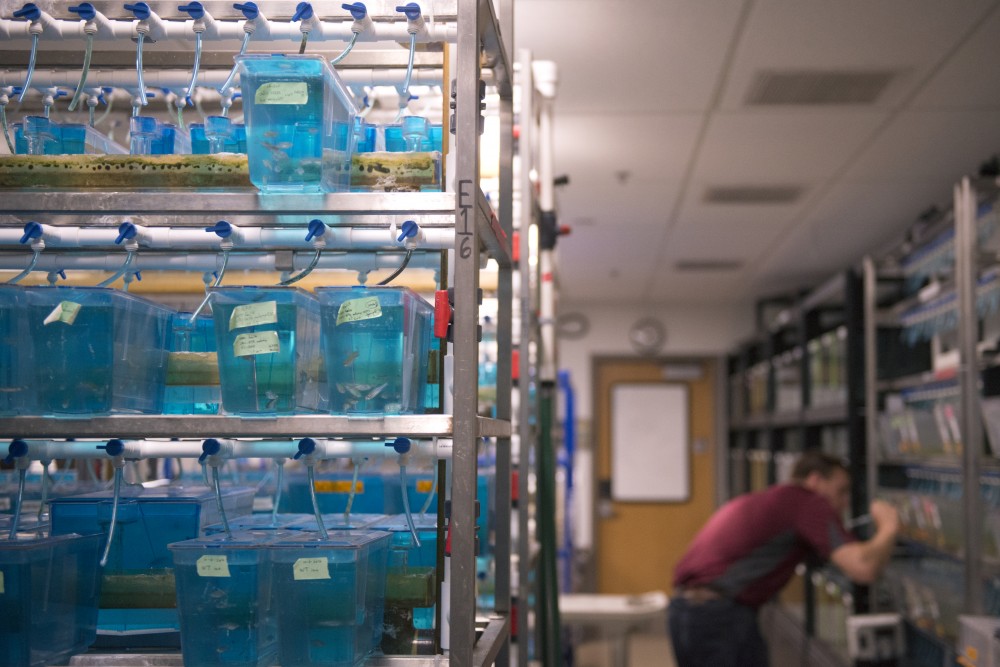For the first time ever, a fish embryo survived being frozen and thawed, which could help preserve species and repopulate oceans.
For decades, researchers have successfully cryopreserved — frozen and thawed — mammal embryos and a variety of animal sperm, but scientists were unable to do the same for fish embryos. Now, with a pairing of gold nanoparticles and lasers that thaw at millions of degrees per minute, University of Minnesota scientists successfully cryopreserved zebra fish embryos.
“The ability to freeze [fish] down is like an insurance policy … Even if all of them died, you have them somewhere … and you can use it for research [or] for repopulating the oceans,” said Kanav Khosla, Ph.D. student in the University’s department of mechanical engineering.
The paper was published in the academic journal ACS Nano Thursday.
Mary Hagedorn, marine biologist at the Smithsonian Conservation Biology Institute, worked to cryopreserve fish embryos for 20 years, but it wasn’t possible until she used the University’s technology.
“No eggs or embryos from any non-mammalian species have ever been frozen, so this is a gateway for all of that,” Hagedorn said.
Ice, gold and lasers
The key to successful cryopreservation is the ability to warm the embryo fast enough so no ice crystals form in it, Khosla said.
“The crystalline structure of ice basically pierces through the cell walls and destroys them,” he said.
To solve this, researchers injected the embryos with antifreeze chemicals and gold nanoparticles, then dipped them in liquid nitrogen to freeze them, Khosla said.
Hagedorn said because most cells are translucent, thawing them with a laser does not work.
Pairing the laser with the injected gold particles, which absorb the energy, allowed the embryos to warm successfully.
George Seidel, a professor at Colorado State University who specializes in cryopreservation, called this method innovative.
Right now, Khosla said only about 10 percent of embryos survive the thaw.
He said those that do survive typically died after 24 hours, but some managed to survive up to five days — a significant benchmark in an embryo’s development.
Applications of cryopreserved embryos
Hagedorn started delving into cryopreserving fish embryos in 1993 with little luck.
“Like many other people before me, I failed. But what I did do is I found out why we could not cryopreserve them,” she said.
The fish embryos’ size, much larger than mammal embryos, and their impermeable membranes made them incredibly difficult for Hagedorn and others to cryopreserve.
Now, with the lasers and gold nanoparticles opening the door for a breakthrough, she hopes the findings will lead to research, species conservation and food production.
Researchers commonly use zebra fish to study human diseases, she said. Scientists genetically modify the fish to model different diseases.
By freezing them, the processes can go faster and researchers can save the different versions, Hagedorn said.
Freezing fish embryos can let fish farmers raise fish at a low price year round instead of just during spawning season, she said.
Seidel said this technique could improve mammal cryopreservation, including on humans.
The team said they hope the research’s next step is to apply it to conserving reptiles, amphibians, birds and other fish.
“Frogs, for instance, are dying around the world and we cannot cryopreserve frog embryos, but with this new technology, we will be able to,” Hagedorn said.
Currently, they are working on applying it to coral preservation, Khosla said.
“We’ve lost almost a thousand kilometers of the Great Barrier Reef and if you had frozen embryos from many of those species,” Hagedorn said, “you could basically just thaw them out and get them started.”

















